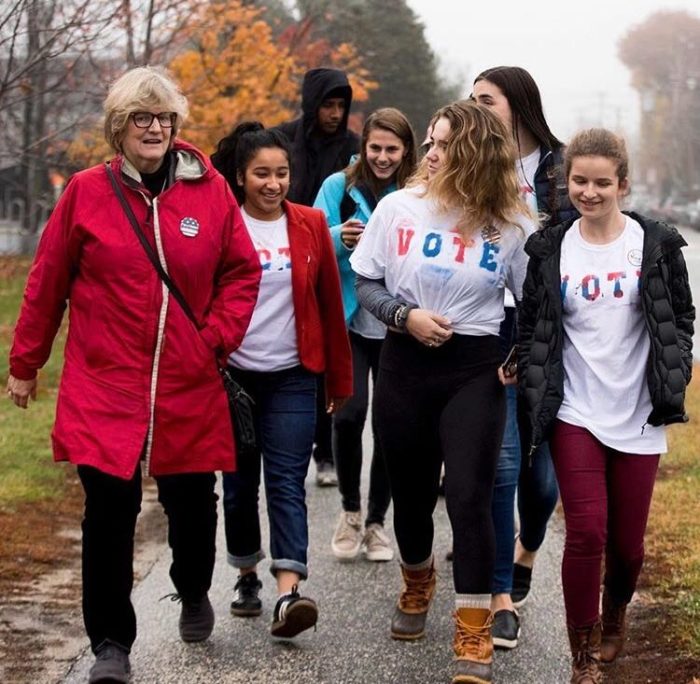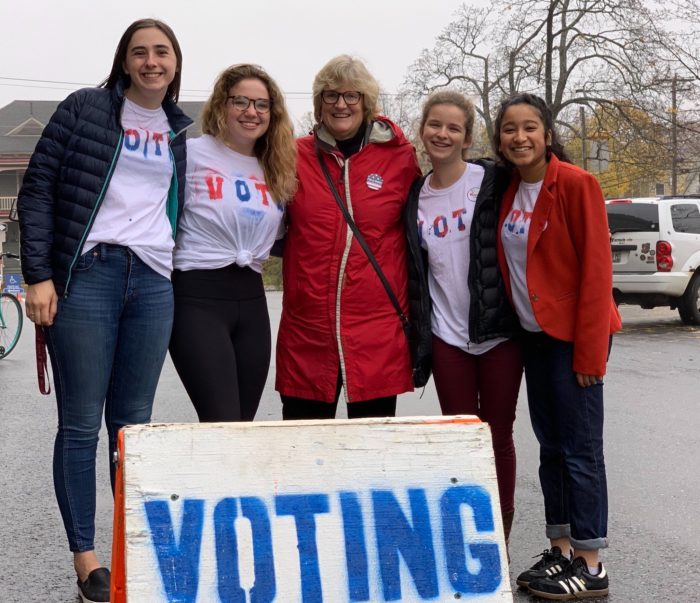On my college campus, I have witnessed a large disparity between those who call themselves activists and those who actually partake in activism. Politics is one of the most popular majors among students on campus and countless peers in my classes claim that they are passionate about political issues. At a school comprised mostly of liberal and left-leaning students, my peers will not hesitate to call themselves politically active because they speak up in class or post a graphic on their Instagram story. While these small acts are important, they need to be taken further in order to effect any sort of tangible change.

Semester after semester, the other members of our College Democrats executive board and I have tried to find ways to convince these politically interested students to come to meetings and events, always with very little success. I can understand—as college students, we are constantly juggling dozens of priorities, from schoolwork to athletics and student organizations (and not even considering where sleep fits in). In the majority of cases, this lack of participation is clearly not because of indifference or ignorance: most of my peers are well informed about the issues and can hold an engaged discussion about their political beliefs. What the root of these issues boils down to is the privilege held by many students. My school is over 70 percent white and countless students have spent their entire lives in wealthy New England towns, often attending elite private schools with every resource imaginable in their reach. The Politics majors who often do nothing more than post on social media and complain about Trump in class largely come from families of high socioeconomic status who do not see the direct impact of bigoted, harmful policies in their day-to-day lives.
Yes, in the moments when I turned down plans with friends to phone bank, I often felt resentful. But I know that if I want to be the annoying friend who doesn’t shut up about politics and spends every free minute scrolling through the dark hole that is political Twitter, I have to back that up with real, substantive actions. Joining other politically active individuals to make an impact can be invigorating: learning that we flipped the House after spending months investing in the election was the best feeling. It made every hour worth it.
Unsurprisingly, those taking action on campus are predominantly students of color. While exceptions exist to these generalizations, the heart of the problem still lies in privilege. I find myself frequently falling into these traps: as a straight, cis, white woman, it can be easy to tune out the atrocities happening every day and spend my time worrying about the more trivial issues in my life, like the hours of readings I’ve been assigned or anxiety I have over a previous social interaction. But for many Americans, getting involved in activism and effecting political change can be a matter of life and death.
It hasn’t always been like this—students on campus were energized and eager to participate politically following the 2016 elections. I began college in September of 2017 when students were upset by the election results and channeled that hurt into political involvement. I showed up to the first College Democrats meeting of the semester along with over 100 other students excited about making political change. This energy electrified the campus into the fall semester—an important local mayoral race was on the ballot and students rallied around the election and the Democratic candidate, an alumnus of the school. An unexpectedly large number of students turned out to vote; however, he only received 42% of the vote—not a majority, and not enough to be immediately elected. A runoff was scheduled to be held in the following weeks, falling during our final exams. Unsurprisingly, student turnout declined significantly and our candidate received 500 fewer votes than the first election, losing the race. It was disheartening to say the least.
We got dozens of reports on the flier passed at @BatesCollege. Partners @bangordailynews explain why it’s false: https://t.co/7fv2sOtoYI
— Electionland (@electionland) November 7, 2016
If the election had just been one week earlier, student turnout would have been so much greater. In a relatively small city where students can have a significant impact on elections, this scheduling was no accident. There have been repeated attempts made by local and state government officials to suppress the student vote. It’s already difficult to increase student engagement; it’s even more difficult to create a culture of political efficacy when those in charge wield their power to make student engagement meaningless. Just days before the 2016 elections, fliers were spread across campus falsely claiming that students needed to change their driver’s licenses in order to be able to vote at school. This past November, a polling official tried to convince me that I needed an identification card to vote despite laws explicitly saying otherwise.

Without grassroots action, our government cannot function in the way that it is meant to. There are so many students with intelligent, political thoughts who don’t take these ideas beyond their classes and their friend groups. We must demonstrate to students who are wary of the time commitment and difficulty of activism how easy (and worthwhile) it can be to canvass or phone bank. The cultural shift towards student activism must be embraced by the entire community, including those not on campus. College campuses and the surrounding communities must foster environments that encourage civic participation: because no matter how much student engagement increases, the only way to ensure that everyone’s voices are heard is to put an end to voter suppression.

